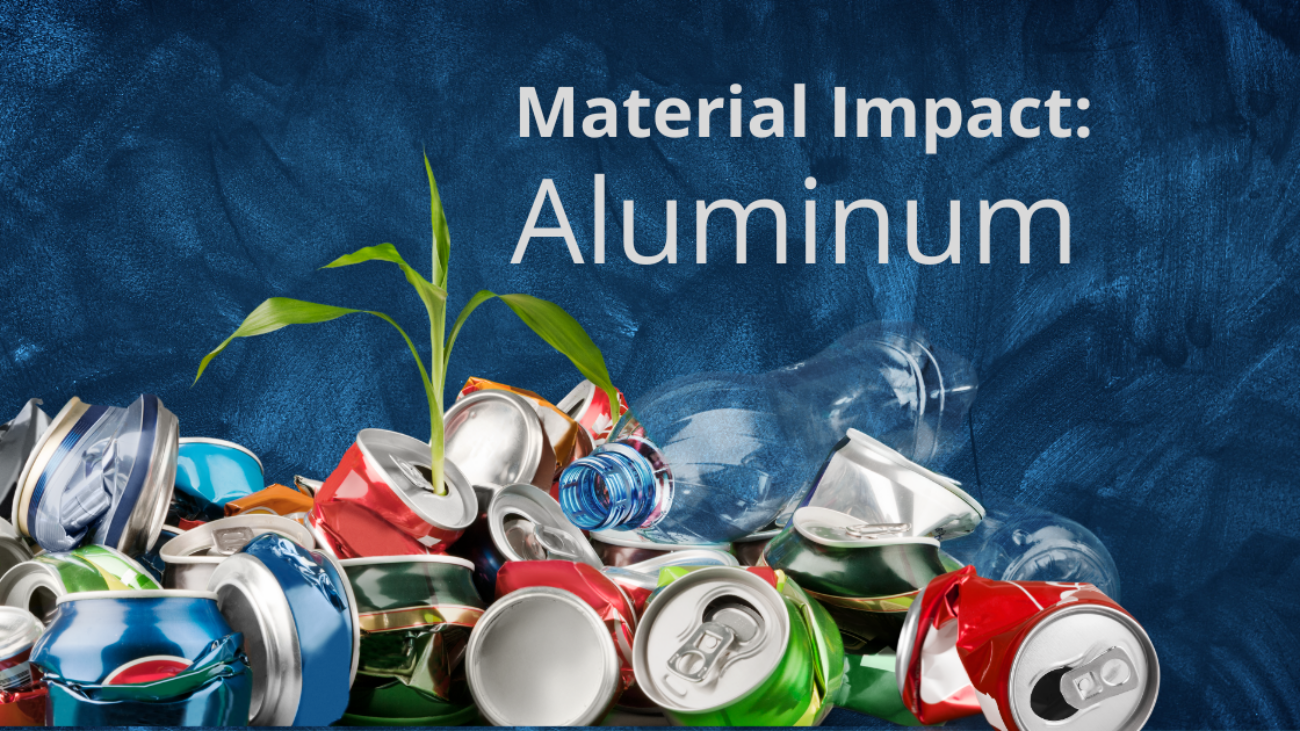This blog is the first of a series of materials that we will cover. Look forward to in-depth articles on plastics, papers, and glass.
From food canisters, collapsible tubes, aerosols, or gas cylinders to secondary packaging systems including overwraps and seals- there is no doubt that aluminum is currently an improvement to our everyday development and functionality.
Yet, amidst its versatility and widespread use, concerns have arisen regarding the environmental impact of aluminum’s cradle-to-gate process for virgin material. To obtain bauxite, the common ore that aluminum comes from, an extensive process of mining, refining, and smelting all demand substantial energy inputs. This process results in heightened carbon emissions which has become a significant concern in the context of global warming. With environmental consciousness at the forefront of consumer concerns, it is important to acknowledge their apprehensions about the environmental impact of aluminum throughout packaging and product development.
In recognition of these concerns, this blog is framed to offer a comprehensive perspective to aluminum’s environmental impact for packaging and product engineers alike. Like most conversations around sustainability, aluminum’s story is complex; while it may not always be suitable for all applications, it also offers opportunities to align with a company’s sustainability goals. For example, aluminum currently holds the highest post-consumer recyclability (PCR) compared to other common materials. We encourage you to delve into a holistic, full-picture understanding of both aluminum’s role in the market and its environmental impact for a well-rounded understanding.
Background:
Aluminum’s success in the commonplace market rings from its abundance. Bauxite, the primary ore used to extract aluminum, is the third most abundant element in the Earth’s crust by weight. This sedimentary rock boasts a high content of alumina. It takes four metric tons of bauxite to produce two metric tons of alumina, which in turn provides one metric ton of primary aluminum metal. (Statistica)
Bauxite deposits are commonly found near the Earth’s surface and are typically extracted by open-pit mining. The country with the largest bauxite reserves according to Statista’s 2022 data pull is Guinea with an estimate of 7,400 million metric tons of bauxite. After Guinea, Vietnam has the second largest abundance of bauxite reserves at 5,800 million metric tons and Australia ranks third with 5,100 million metric tons.
Despite not having the highest abundance of the ore, Australia emerged as the world’s top producer in 2022, with an output of 100 million metric tons. The total import volume of bauxite globally in 2022 reached 132 million metric tons. At this current rate of extraction, commercially viable bauxite deposits are projected to be available within the earth’s core for approximately the next 100 years, as supported by data from the International Aluminum Institute.
Impact:
Manufacturing of aluminum does come at a cost to the environment. These impacts arise during the extraction of bauxite, transportation across oceans and countries, and the energy-intensive process involved in both refining and smelting.
The primary impact from mining virgin aluminum comes in terms of global warming potential, water consumption, fossil fuel use, and freshwater ecotoxicity.
Aluminum production is a significant producer of global perfluorocarbon (PFC) emissions, which are highly potent greenhouse gasses known for their long-lasting presence in the atmosphere according to the EPA. To illustrate their stability, consider that CF4 and C2F6, two common PFCs, have estimated atmospheric lifetimes of 50,000 and 10,000 years, respectively.
Additionally, aluminum production contributes to freshwater ecotoxicity. When nutrient-rich runoff from aluminum production reaches water bodies, excessive algae growth blossoms which disrupts ecosystems. The cradle-to-gate process in whole requires substantial energy consumption, with a significant portion currently reliant on fossil fuels.
The Green Side of Aluminum: PCR Content
The silver lining in the aluminum lies in its recyclability. Unlike most materials, aluminum can be recycled indefinitely without losing its quality. This act of recycling diverts waste from populating our ever increasing landfills and allows material to be reused in the supply-chain over and over again. Compared to virgin material, recycled aluminum creates significantly less contribution to the environment. 95% less energy is required to smelt and recycle aluminum versus the process for new material. There is also potential for substantial greenhouse gas emissions. Notably, the recycling process does require a large amount of chlorine when removing magnesium which can lead to an increase in water pollutants, contributing to freshwater ecotoxicity, but this impact is still far lower when recycling versus using virgin material according to EcoImpact-COMPASS comparisons. Depending on what trade offs you are prioritizing, recycled aluminum is not full-proof, but has many benefits and is far more sustainable than the virgin source.
To maximize on your commitment to sustainability, reviewing the PCR content is paramount when choosing aluminum products. In the United States, 80% of all aluminum content is made of recycled material. Aluminum cans are composed of an average of 73% recycled content. Compared to glass bottles with an average 23% recycled content and PET bottles with 3-10%, aluminum by far has the highest recycled content in its material. The closed loop recycling process helps ensure that an aluminum can will be infinitely recycled into more cans. Increasing PCR content in any material helps divert mass going to a landfill, but in addition to increasing recycled content, recycling aluminum helps reduce the demand for virgin aluminum and minimizes the environmental burden associated with its production.
Aluminum also stands out among consumers as one of the most common materials to recycle. In 2018, the EPA calculated that only 1.3% of all municipal solid waste collected in the United States was aluminum, totalling 2.7 million tons of material. The success of aluminum recycling post production is contingent on consumer behavior and infrastructure – which varies across regions. For example, in 2018 the total recycling rate of aluminum was 34.9% in the United States. This number is alarmingly low compared to Europe’s consumer aluminum recycling rate of 76.1%. Nevertheless, aluminum still stands out in both regions for its recyclability across the board.
Going Forward:
Aluminum has greatly contributed to the functionality of our everyday lives and bauxite remains a common, readily available material in the world. As trends for the material are projected to continue increasing, it is crucial to not overlook the environmental impact that processing virgin bauxite has during its cradle-to-gate process. When making decisions with sustainability in mind, acknowledge the PCR content in your packaging and product design and aim to always use recycled aluminum material.

